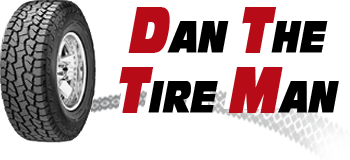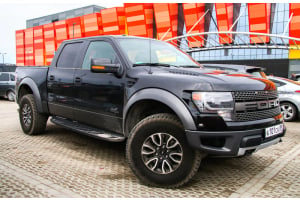
For drivers with stock wheels, knowing the basics of wheels offsets can often be overlooked. However, ensuring that your wheel offset is correct is essential to any aftermarket fitment. Understanding the offset's importance can significantly impact the wheel's overall performance.
Wheel Offset Explained
Simply put, wheel offset describes the positioning of the wheel’s mounting plate in relation to the wheel's centerline. While the definition of wheel offset may be simple, it can significantly affect how your wheels fit. The depth of the mounting plate will dictate whether your wheels sit flush with your fenders or stick out.
Offsets are described as zero, negative, or positive. Below, we’ve noted each accompanying offset definition;
- Zero Offset. If a wheel has zero offset, its mounting plate is in line with the center of the wheel.
- Negative Offset. A wheel with a negative offset has its mounting plate located closer to the inside of the wheel.
- Positive Offset. A wheel that has a positive offset will have its mounting plate situated closer to the street side of the wheel.
Why Is Offset Important?
When seeking custom wheels, many will be fixated on the size and width of the overall wheels. However, a properly sized wheel with improper offset will result in an issue with fitment.
If you increase your width without modifying your original offset, the inner portion of your wheel may start to rub against your suspension. As such, you’ll need a wheel with an increased negative offset to push the wheel further from your suspension. However, if your negative offset is excessive, you may have the opposite issue with your wheels now pushing against your fender.
- If a Wheel Offset Is Too Negative. Wheels with an extreme negative offset will stick out from the wheel well and rub against the fenders.
- If a Wheel Offset is Too Positive. Wheels with an overly positive offset will be set too deep in the wheel well, possibly interfering with the suspension.
In addition to the aesthetic disadvantage, improperly offset wheels will affect your car's handling.
How To Measure Wheel Offset?
Now that we understand its importance, how exactly do you measure your wheel offset? If you plan to measure your offset independently, you simply need a straight edge and measuring tape.
With your tire on the ground, place a straight edge across the wheel opening and measure the distance to the floor. Divide this number by two to get your centerline measurement. After, measure the distance from the mounting bracket to the straight edge. If this measurement is greater than the centerline, your wheel has a positive offset. If the number is less, you have a negative offset.
The difference in mm from the centerline to the mounting bracket is the offset number. As such, the difference between a 20mm vs. 40mm offset is a 20 mm difference in the positioning of the mounting plate.
What Does ET44 On A Wheel Mean?
As most wheels will have their accompanying offset displayed on the rim, you can skip measuring altogether. German wheel manufacturers will describe their offset with an “ET” followed by its offset number.
As such, finding an ET 44 label on your wheel indicates an offset of 44m.
When changing wheels, manually figuring out your new offset requirements can involve a lot of math. Thankfully, most retailers will keep a database of the correct offset for your car at different wheel sizes.
What Is Wheel Backspacing?
Going hand in hand with offset numbers is wheel backspacing. While offset measures the side distance, wheel backspacing displays the space between the rear of the wheel and the mounting plate.
As your brake rotor and caliper typically occupy this space, it’s essential that there be enough backspacing. If there is not enough space, your wheels will collide with your brakes, causing apparent problems with drivability and handling.
Can I Offset Regular Wheels?
If you want to modify your current wheels' offset, you can purchase offset plates. Custom offset plates are placed between your wheel’s mounting plate and the axle. Typically sold in 5mm increments, these plates will push your wheels out, adding a stance and allowing a wider track width.
If you are looking for new wheels and tires for your car, DanTheTireMan has a vast selection of cheap tires for your ride.





